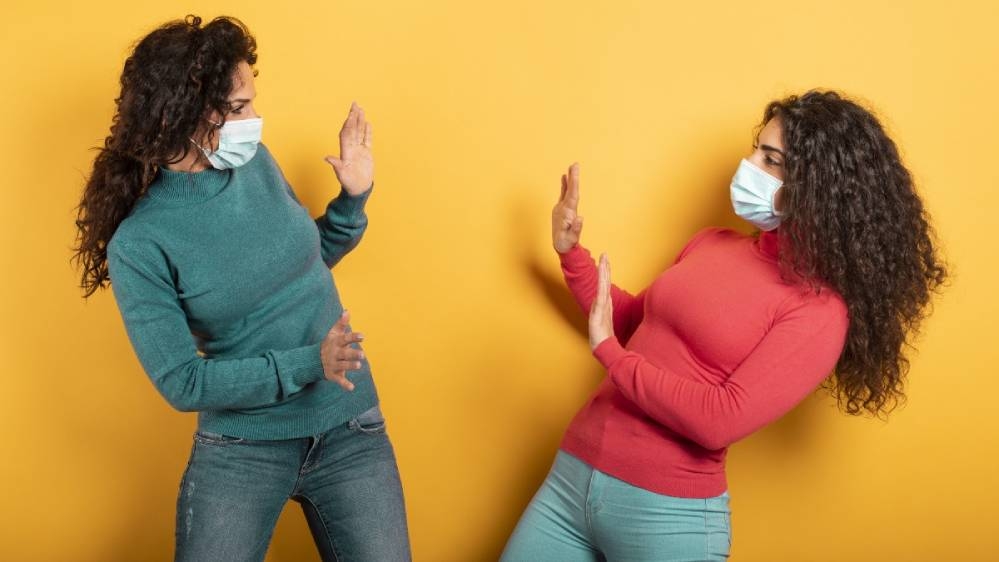Many believe that it is impossible to avoid the coronavirus if someone with whom they live in the same house gets sick. But is it? Researchers reveal “all the secrets” and make recommendations.
The coronavirus pandemic has brought with it new habits, changing the way we live once and for all. We wore masks and gloves, kept the necessary distance from others and closed at home to protect ourselves from the virus. The threat, however, was not eliminated, as covid continued to be transmitted inside the home, among family members.
Household contamination has been one of the prevailing fears during the pandemic, as many believed it was impossible to avoid the coronavirus if someone they lived with became infected.
But is this true or a myth?
According to the findings of a recent study, the risk of contracting a coronavirus (Omicron mutation) from a person who has been diagnosed with the disease at home is only 42.7%. If, for example, there are 6 people in a house, on average only 2 out of the remaining 5 people can be expected to become infected, according to the new study.
How is the “risk of infection” calculated in the house, from loved ones?
Researchers have used the term “secondary incidence rate” to describe the average number of secondary infections among a group of people exposed to the coronavirus and coexisting in the same space, such as a household. This percentage is calculated from a number of different factors, including:
- How contagious is the strain of the virus.
- How high a person’s viral load is and how effectively they fight infection.
- The state of immunity of other members of the house.
- Characteristics of housing, such as the density of people living in a particular square meter and ventilation of the room.
The secondary attack rate is the average of these factors, so transmission varies significantly between households. Thus in in some cases, the virus is transmitted to all members of the household, while in others, transmissibility is minimal or absent.
How has the rate of intrafamilial transmission of the virus changed during the pandemic?
A meta-analysis published in the Journal of the American Medical Association (JAMA), including the results of 135 studies involving 1.3 million people from 136 countries, showed that the secondary infection rate for the original virus was 18.9%. In this way the chance of contracting the coronavirus if you lived in the same house with the sick person was about 1 in 5.
The increased infectivity of new mutations in late 2020 has led to increased transmissibility (transmission) in the home. The alpha mutation had a secondary infection rate of 36.4%. This dropped to 29.7% with the Delta mutation, but rose again to 42.7% with the introduction of Omicron.
Why do secondary incidence rates differ?
Although the Delta mutation was more contagious than the Alpha mutation, the frequency of secondary cases was lower than in primary patients (those who acquired the infection from outside). This is partly due to the increased immunity achieved in the general population at the time of the introduction of the Delta strain, or through vaccination. And although the vaccines were less effective against Delta than for earlier mutations, and their protection weakened over time, vaccinations continued to reduce transmission of the virus in the home.
The same was found in the case of Omicron sub-variants, which were found to be more contagious but also more resistant to vaccines. However, the risk of infection from a roommate remained limited to 42.7%. Apparently, the increased immunity of the population as a whole also played a role here.
Vaccination is an ally in reducing transmissibility
In conclusion, it should be noted that vaccination has contributed significantly to reducing the incidence of secondary cases in the home. In fact, this decline was even greater when all members of the household also took booster doses.
Therefore, you are not “doomed” to contract the coronavirus if someone in the house is infected. Measures such as social distancing, ventilation, and vaccinations exclude the scenario of transmission of infection in the home. This is the scientific conclusion of the experts.







More Stories
Shocking report from Japanese scientists: “Cancer deaths increase sharply after mass Covid vaccination”
Study: Scientists have discovered why children are more susceptible to coronavirus
22 arrests and confiscations took place in Italy and other EU countries in the case of "covid" EU funds (video)